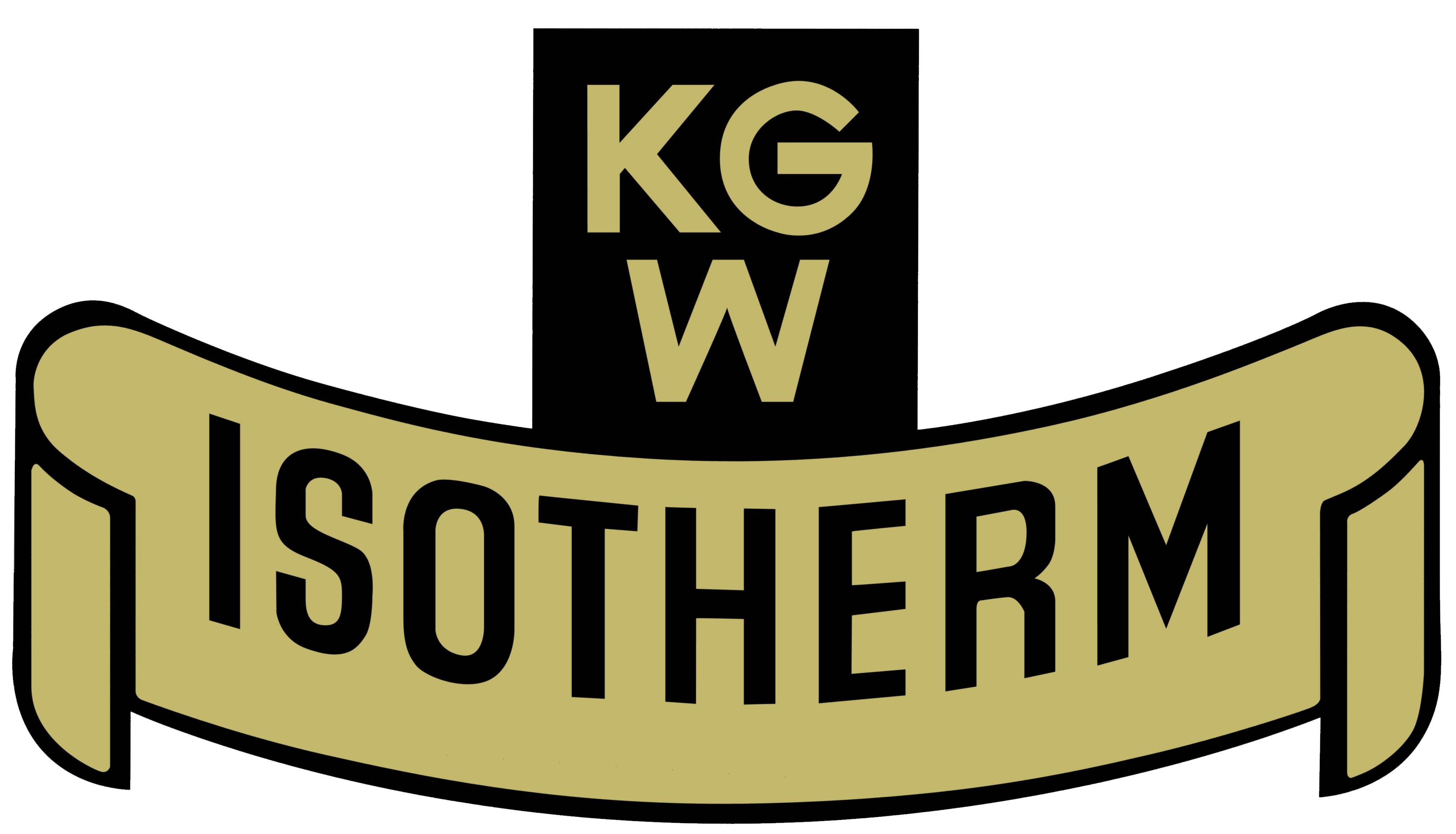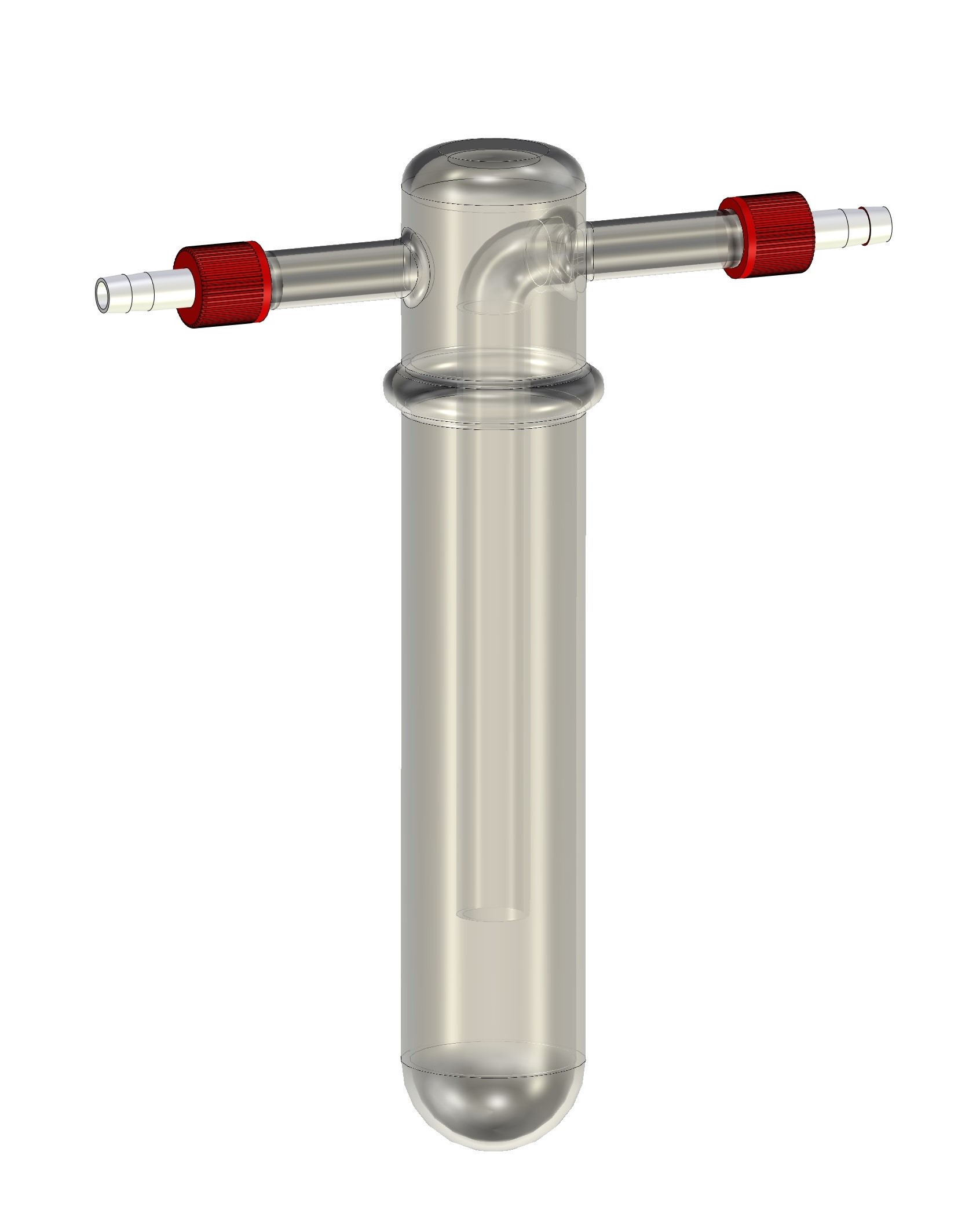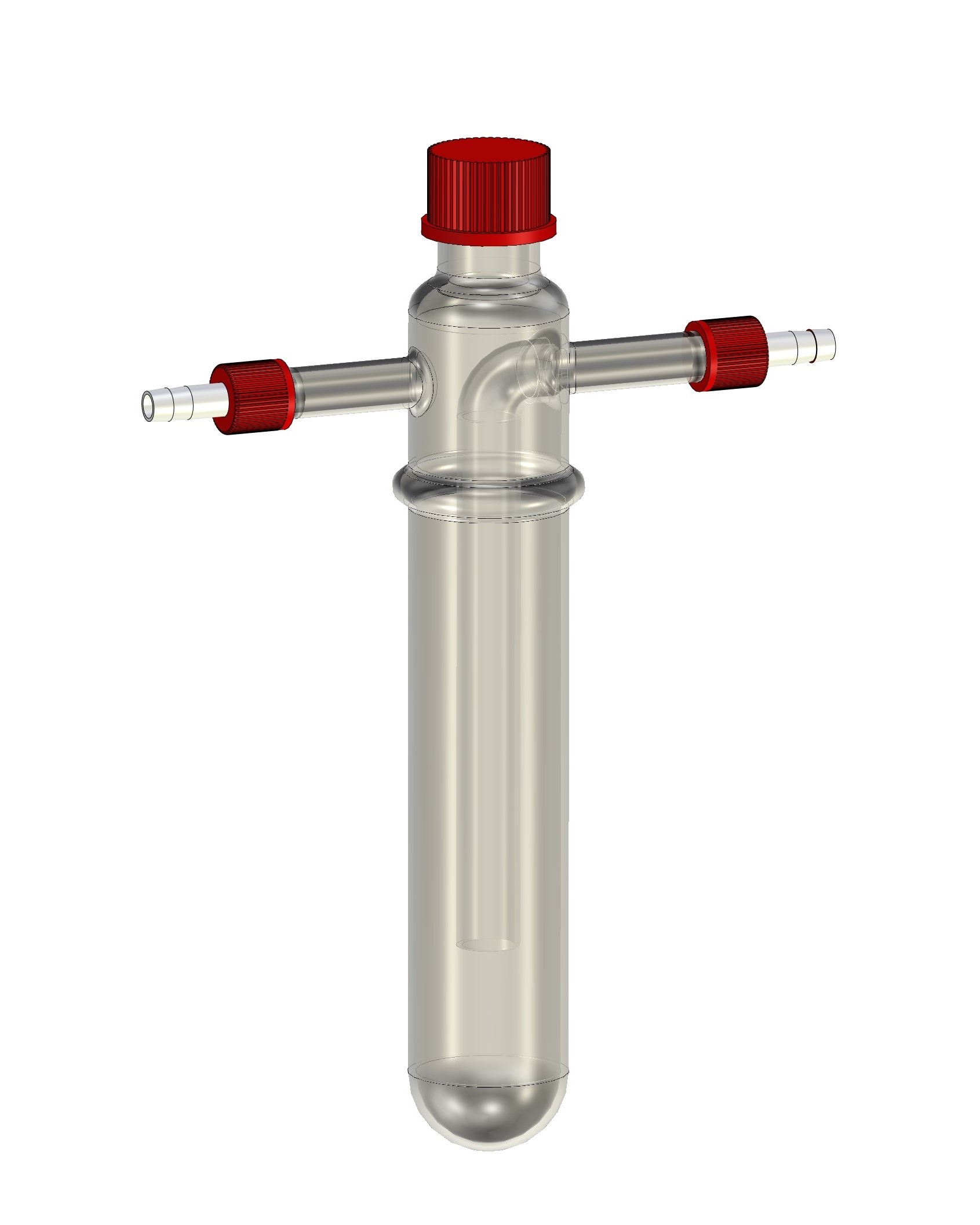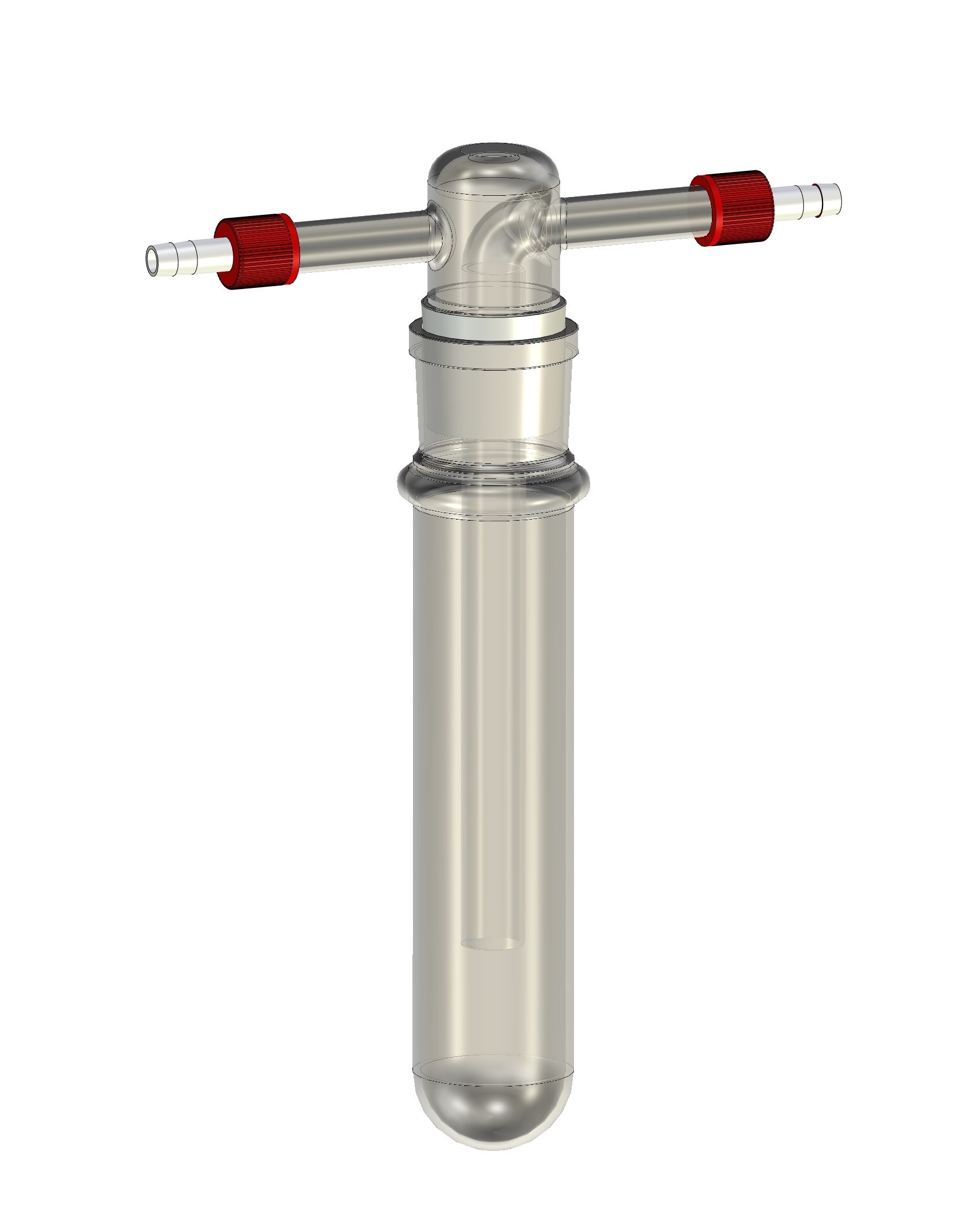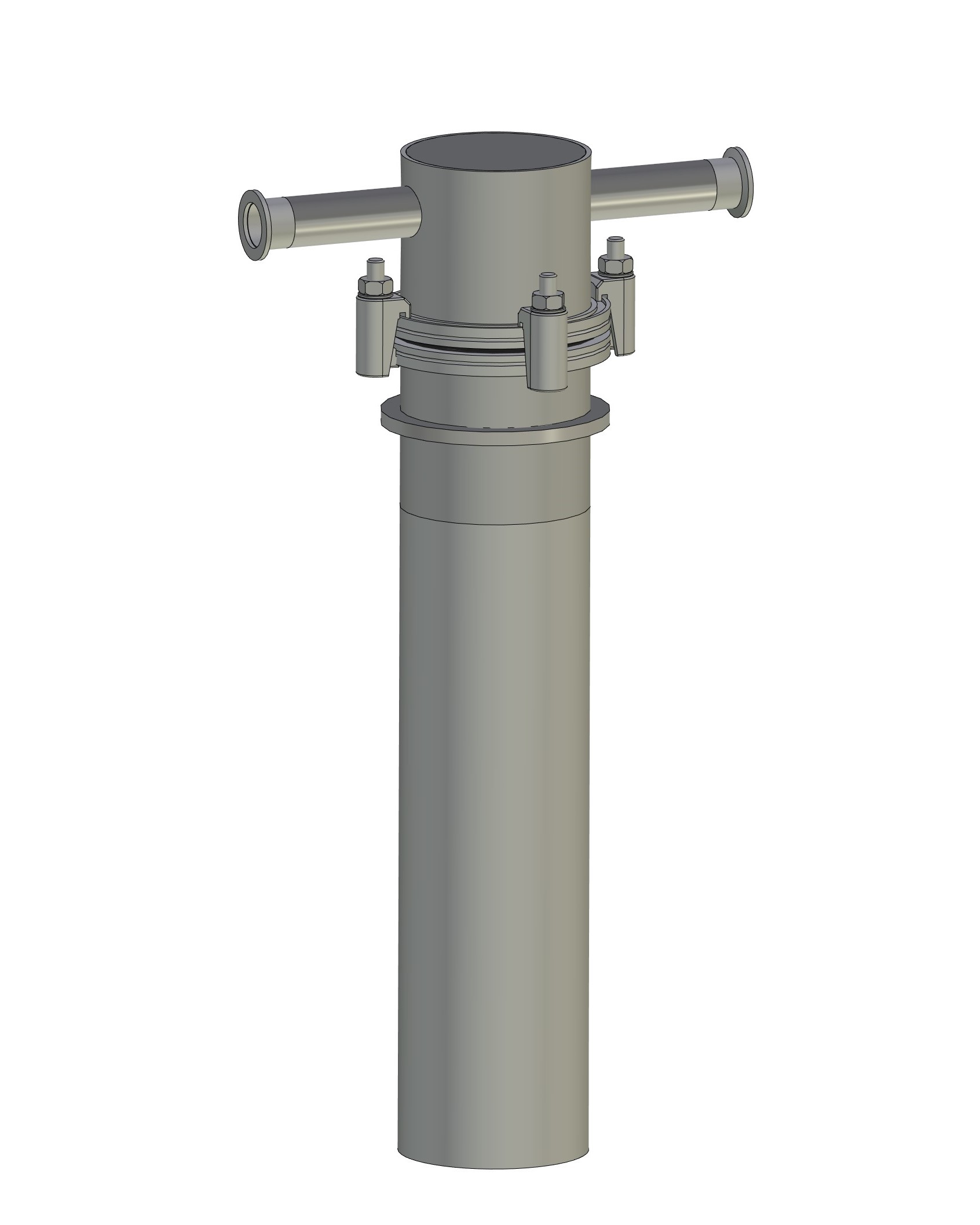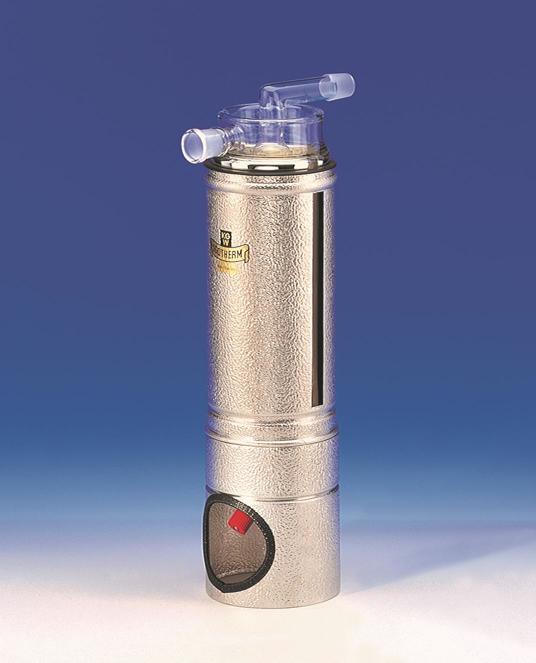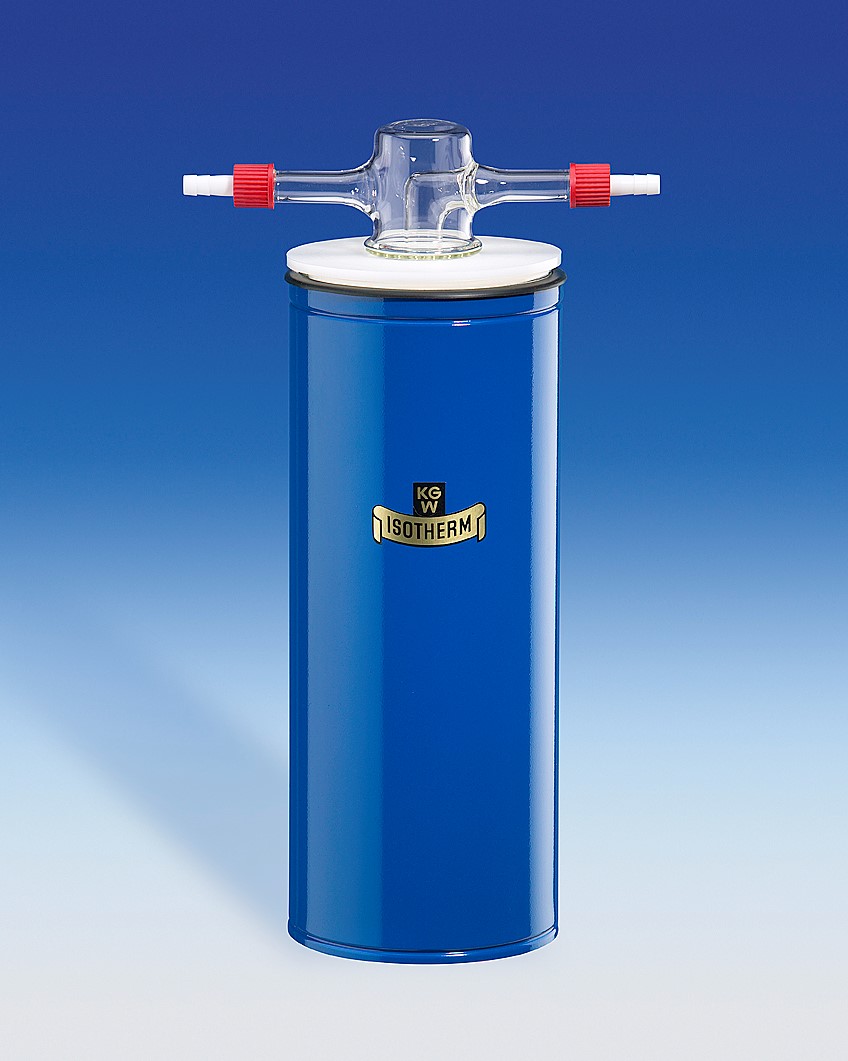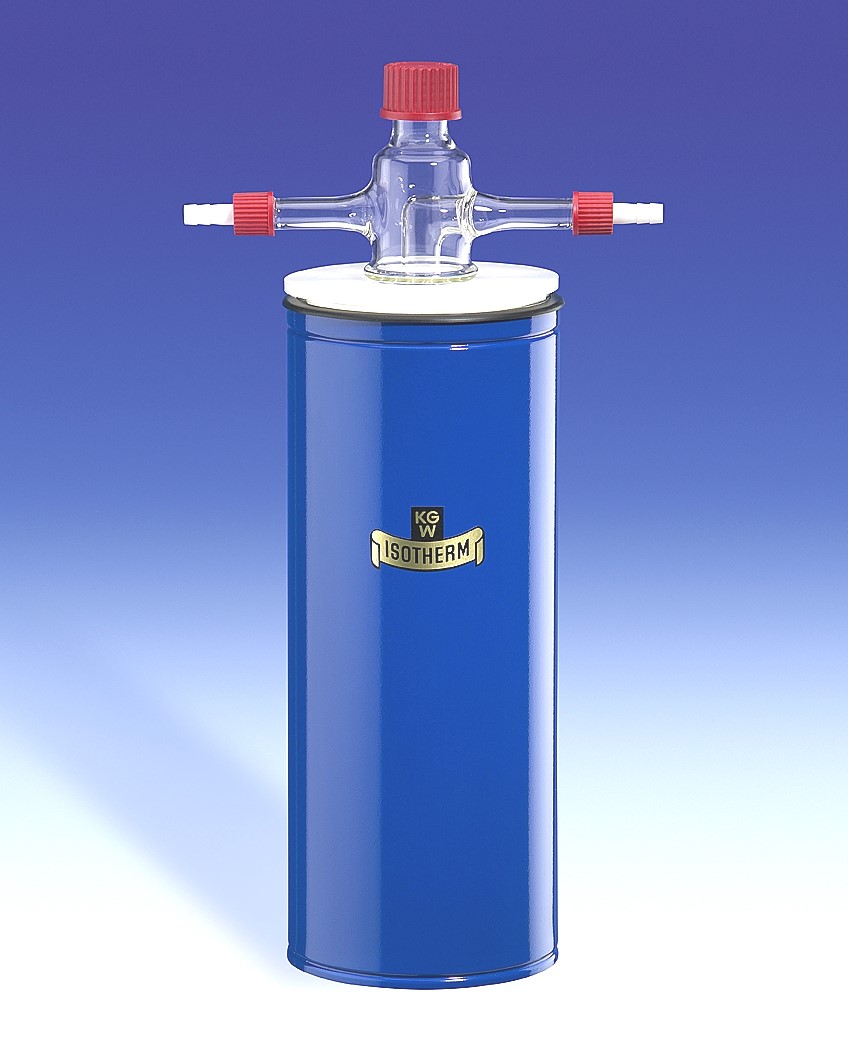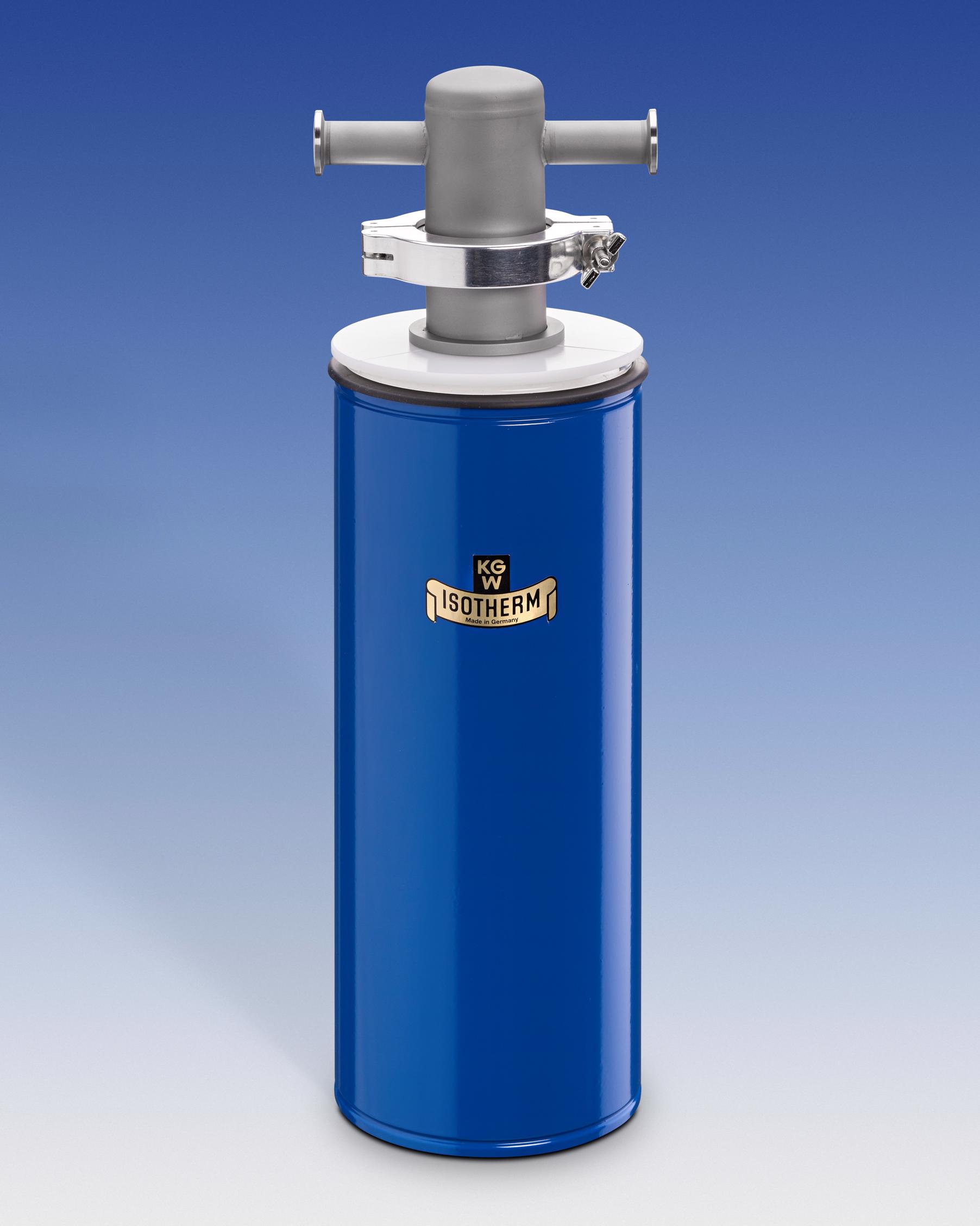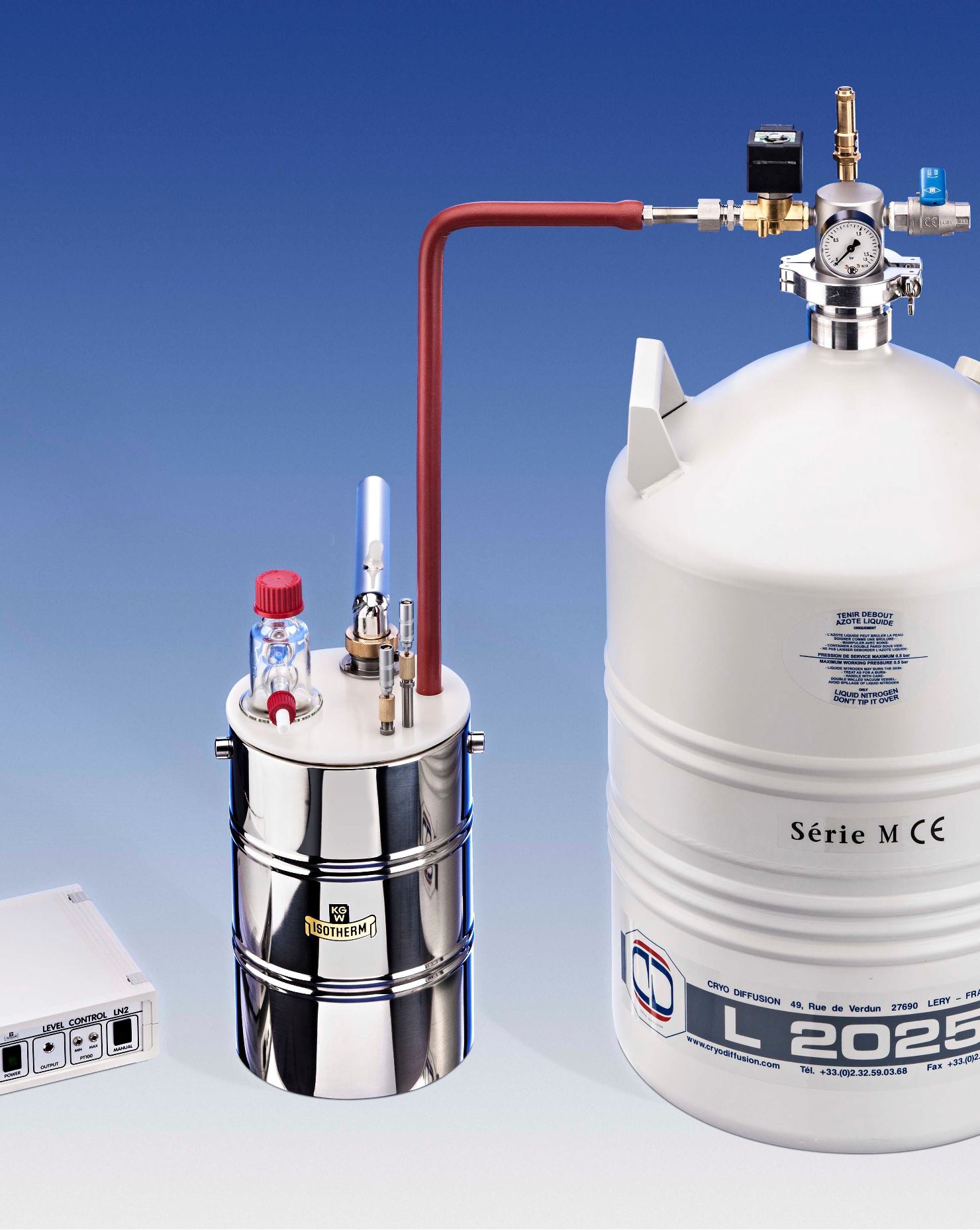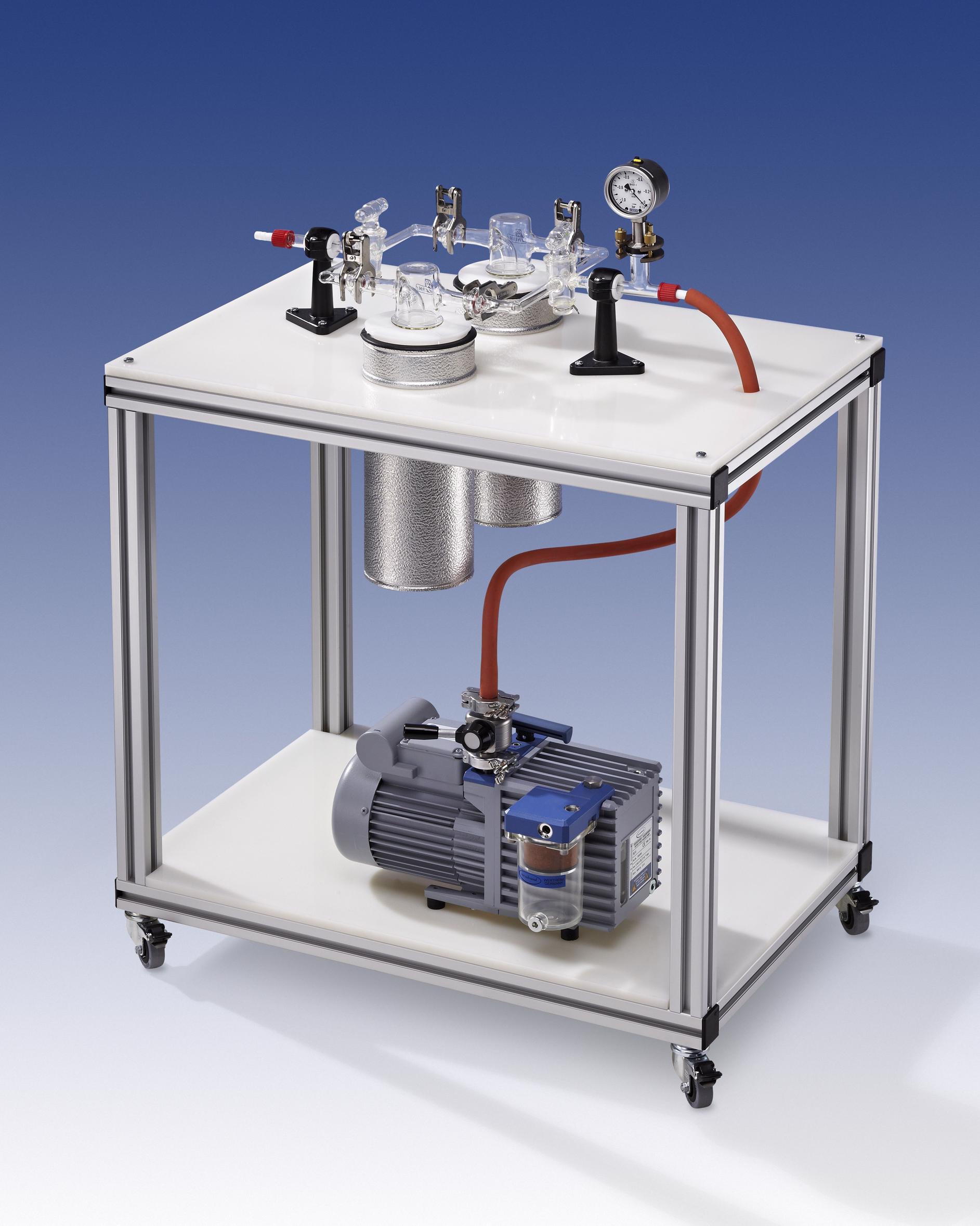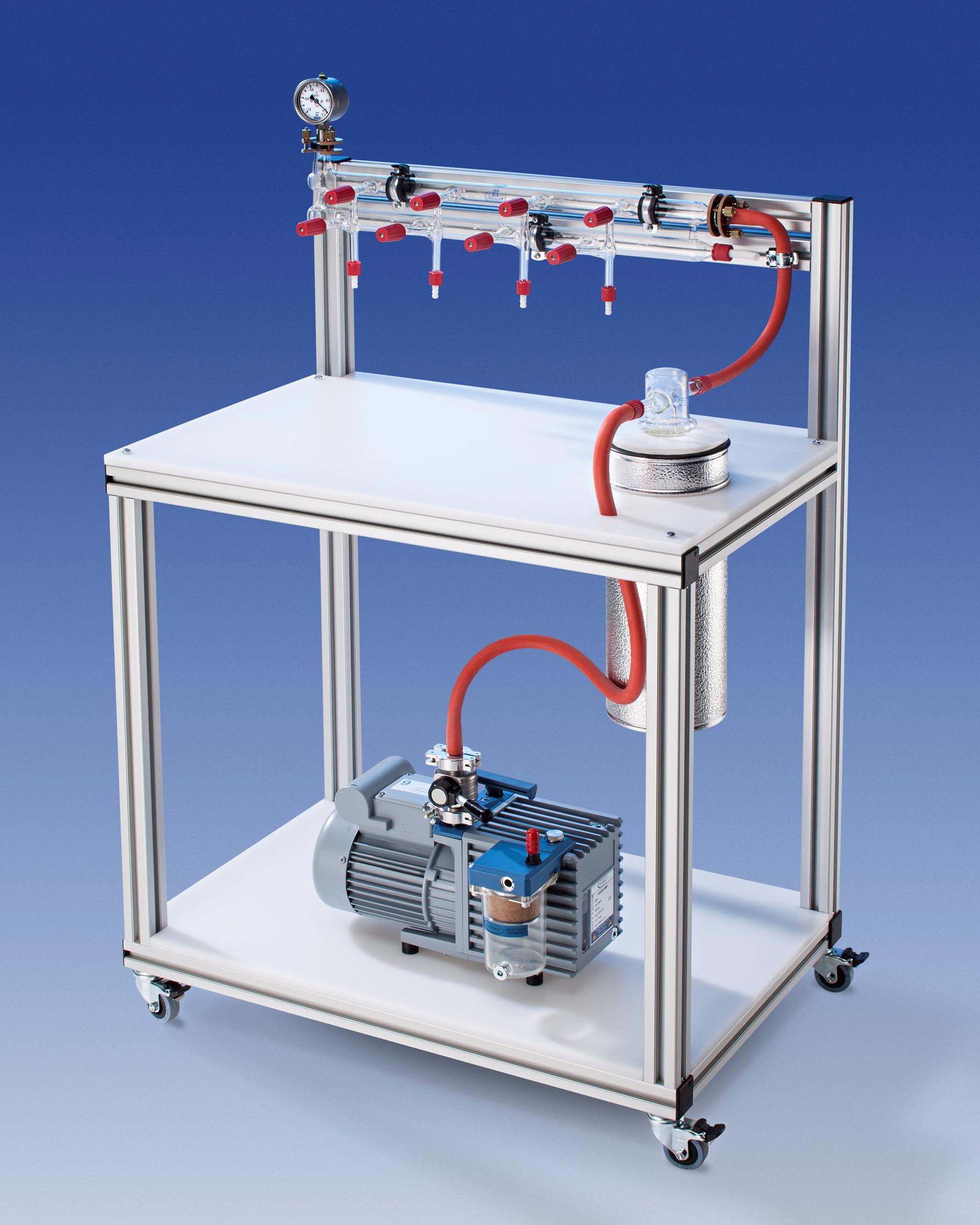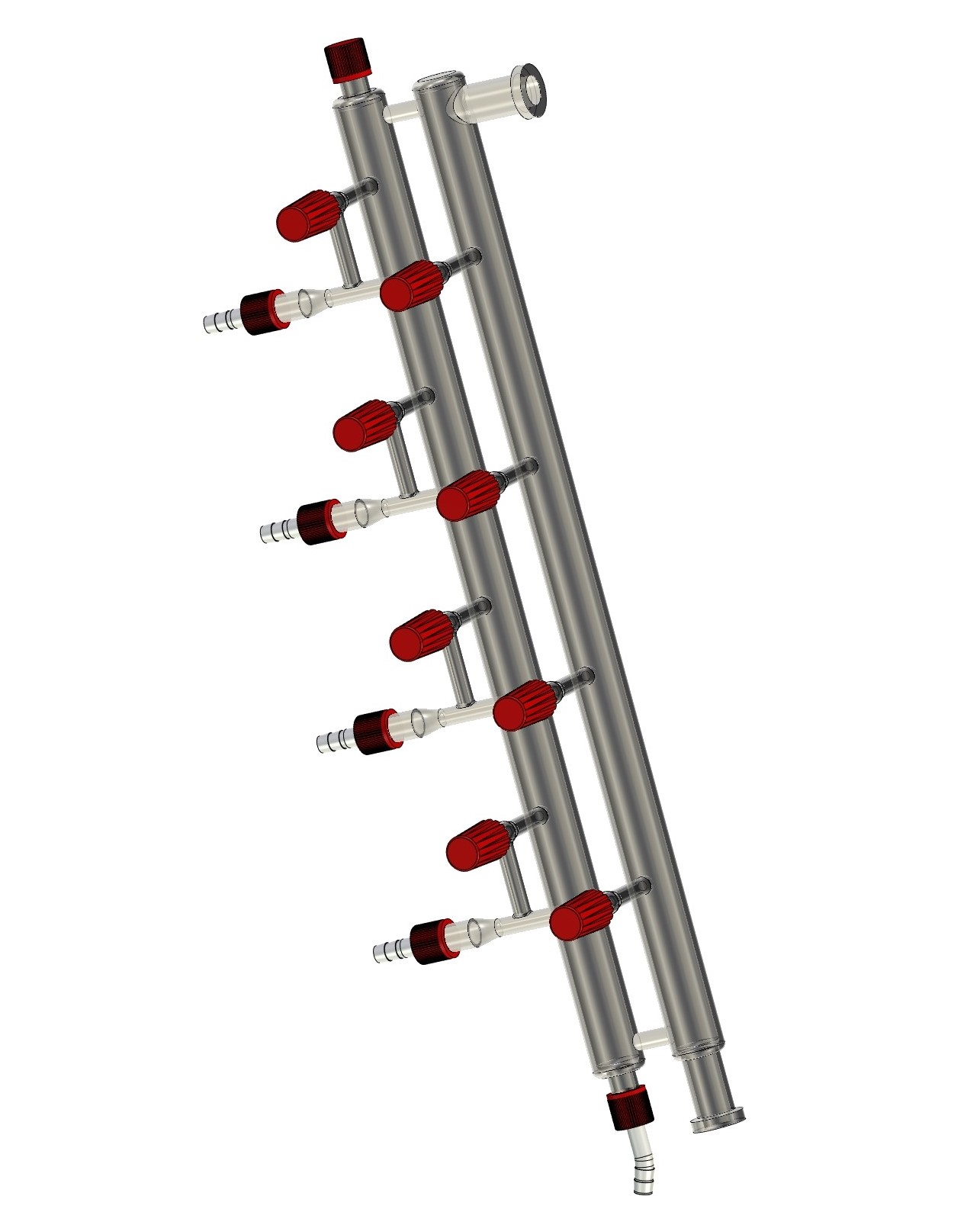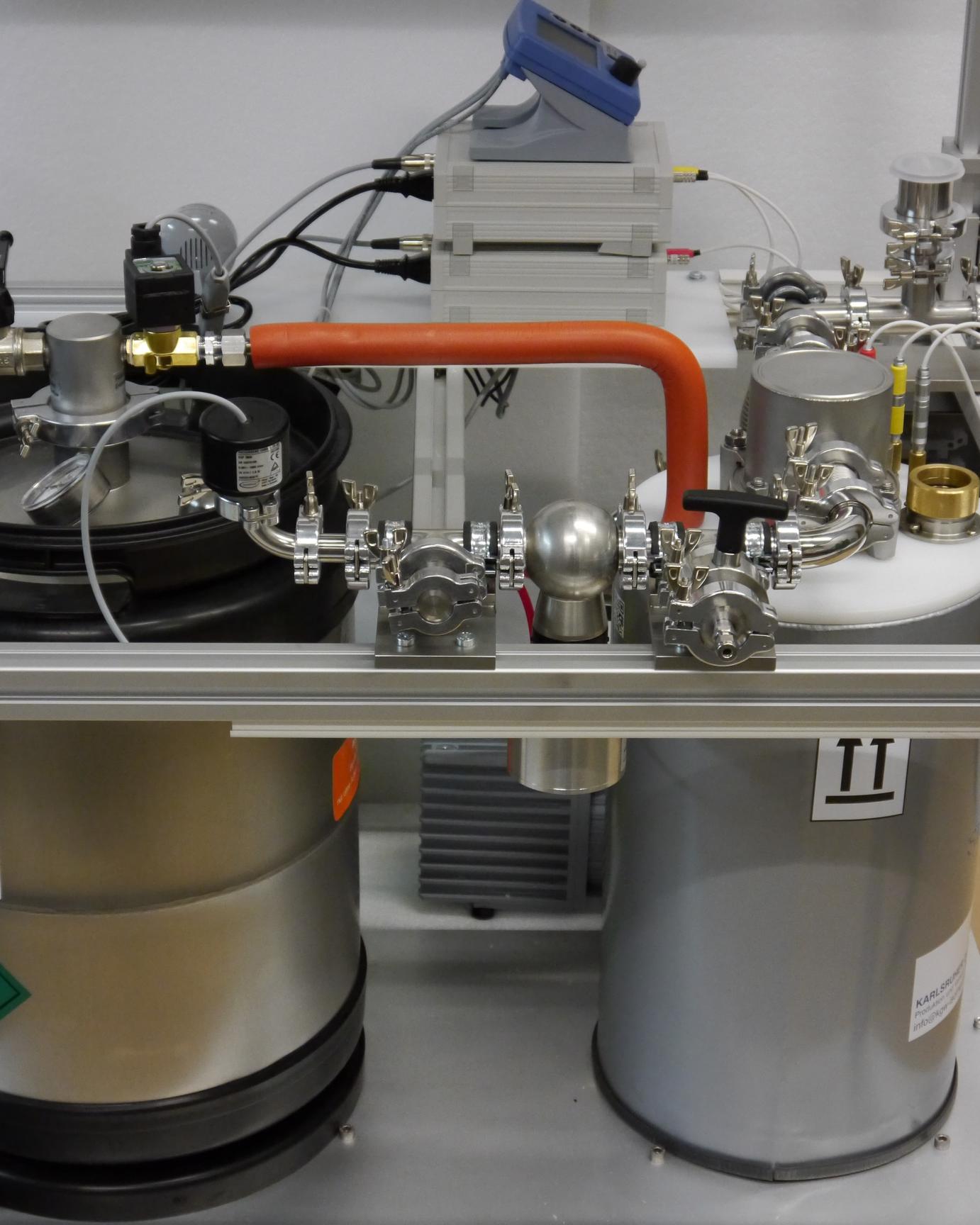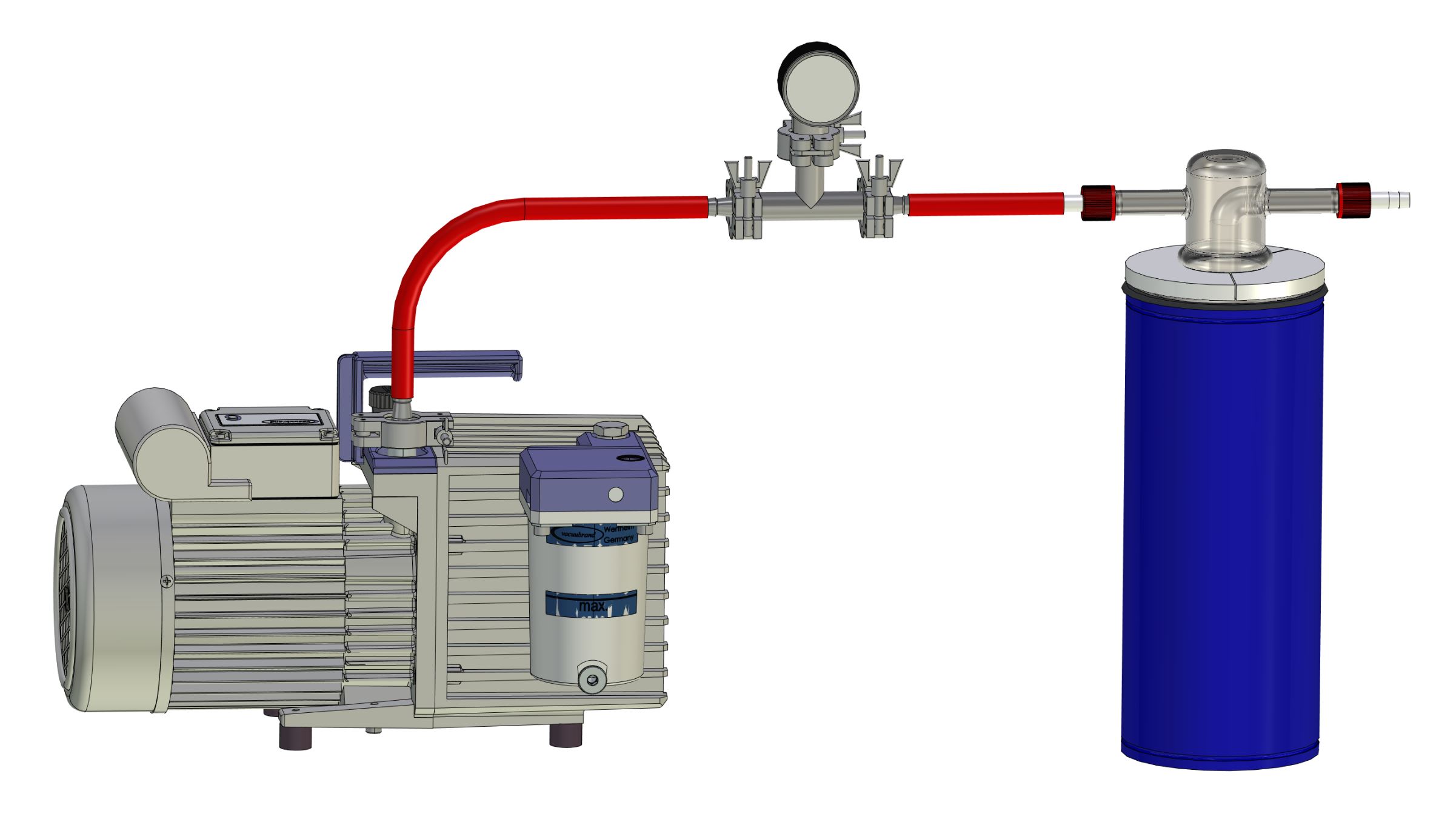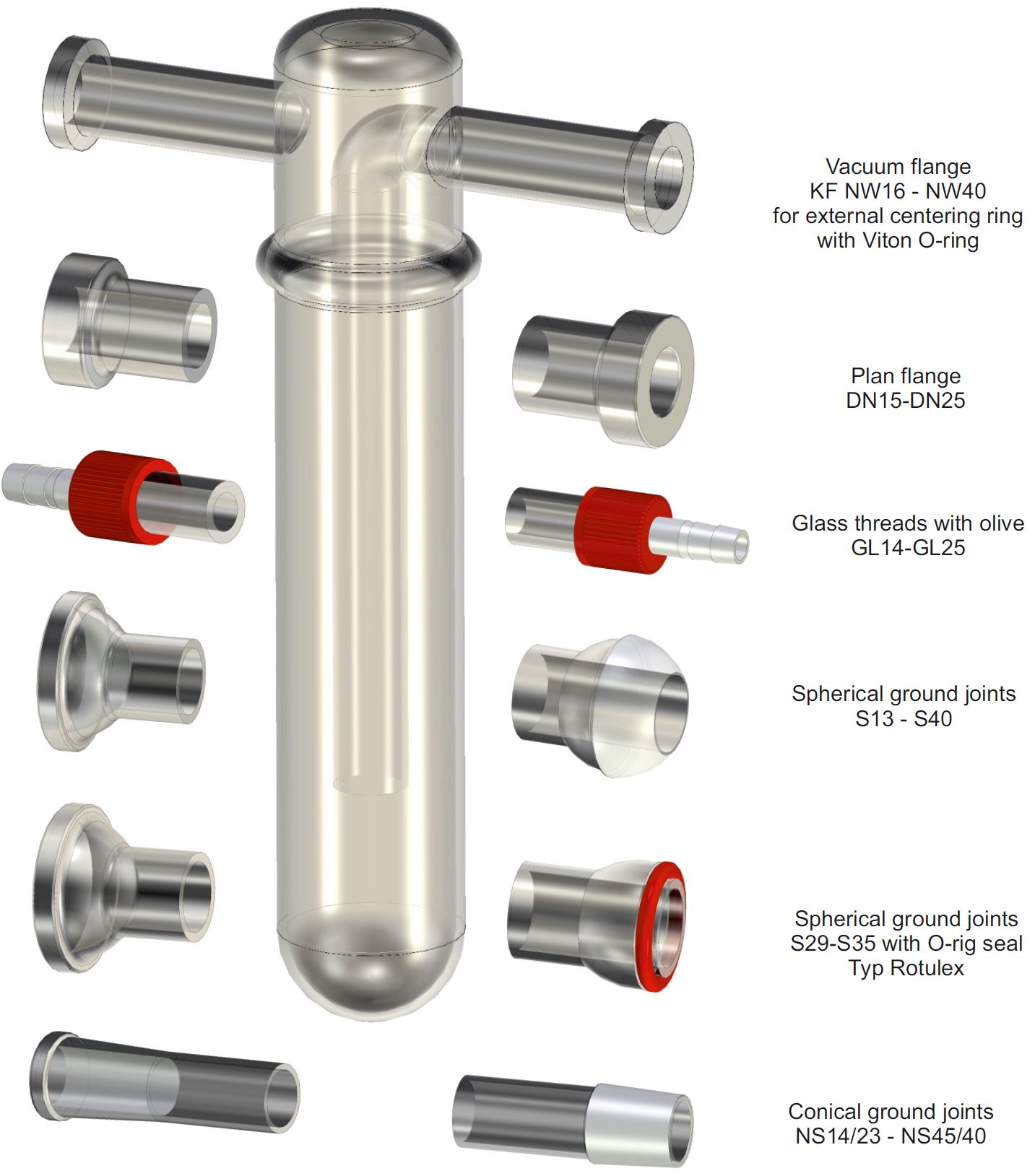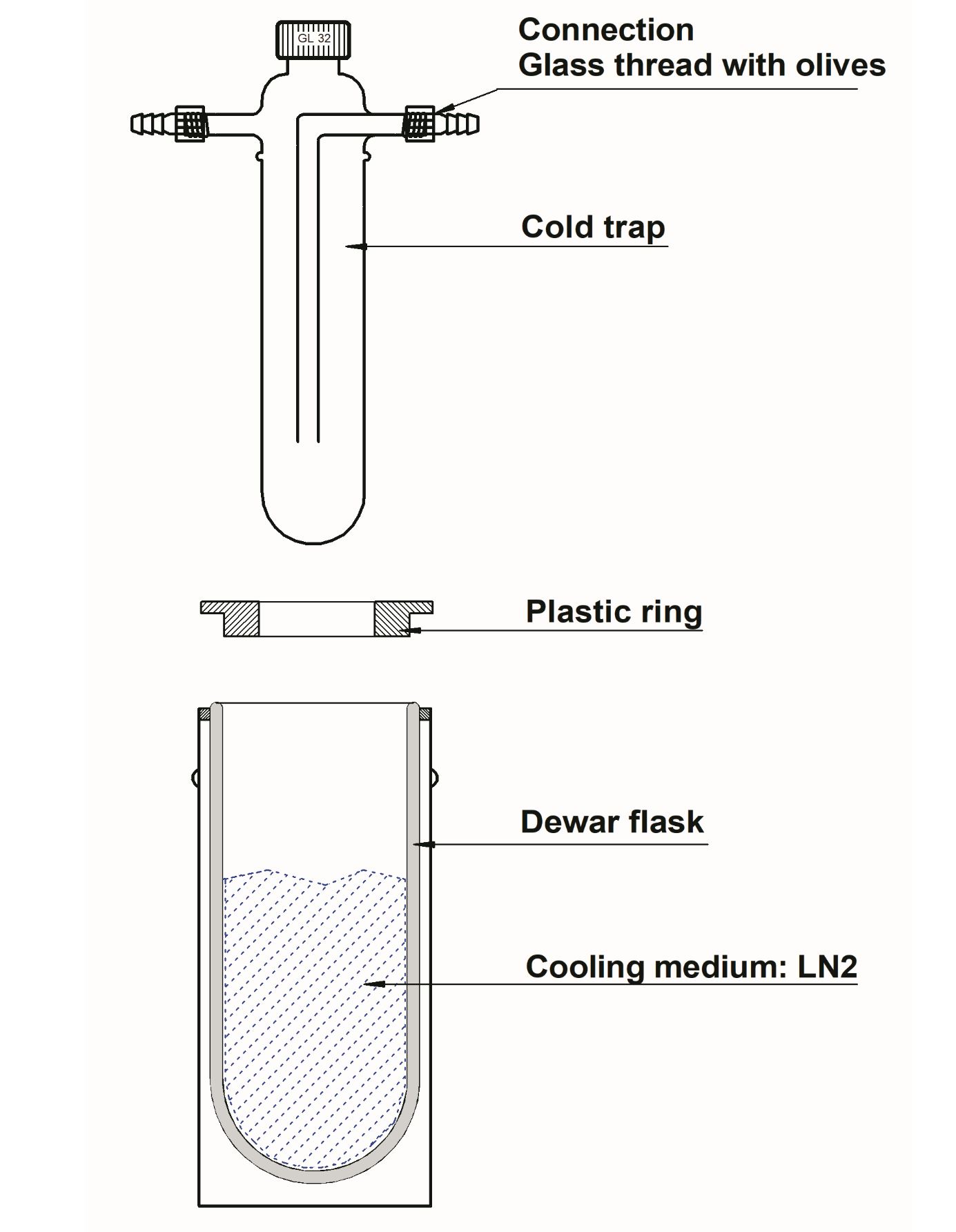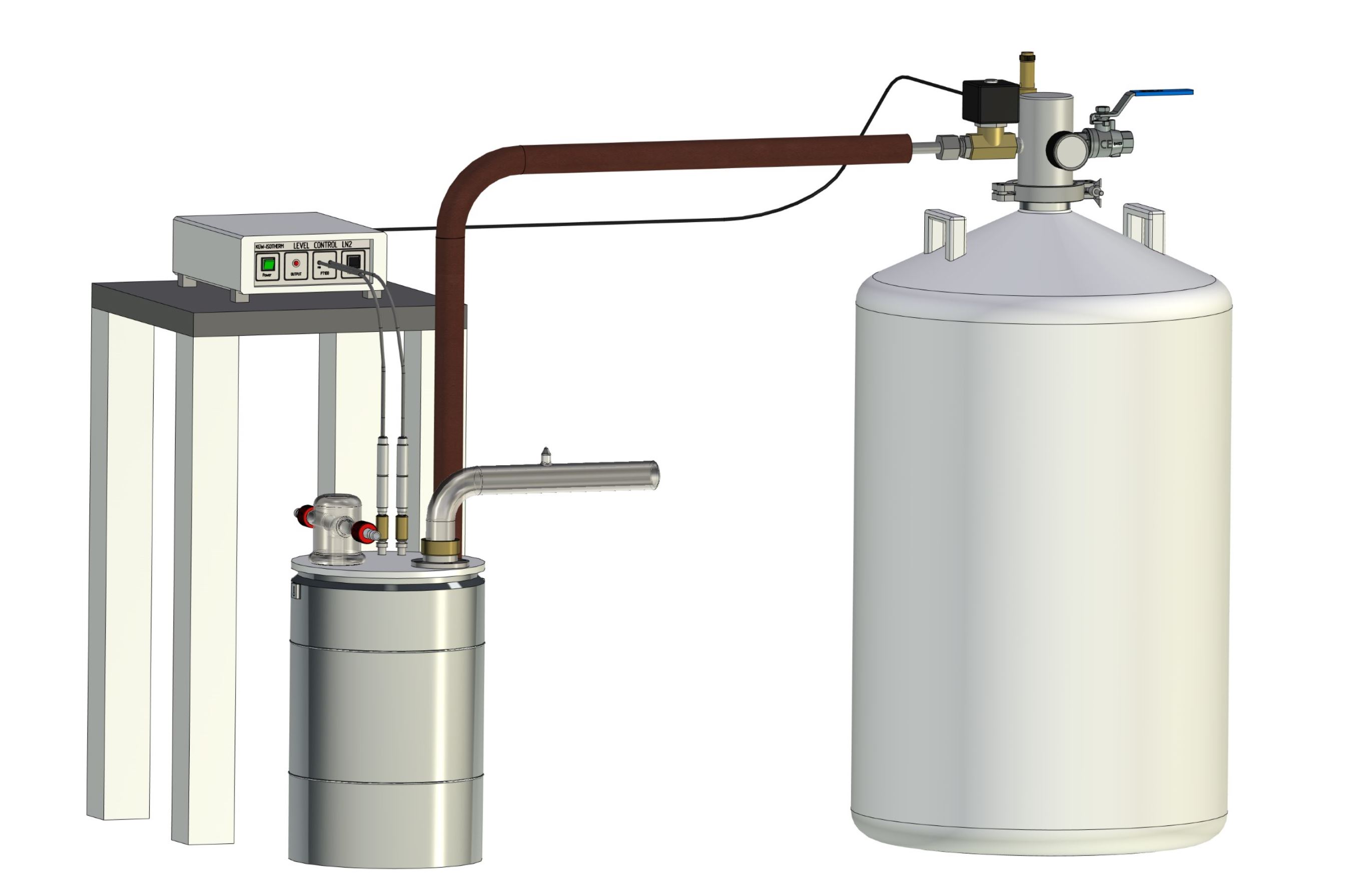Cold traps
Variants
Hence different materials may be present in the gas stream (e.g., water / solvent / acid or alkali containing gases), the condensation temperature of the material to be condensed must be considered first. Having a cold trap, the material made off (glass or metal) and the geometry of the cold trap play an important role regarding the performance of the cold trap. In order to increase the performance of cold traps, these are sometimes provided with integrated baffles, so that the gas is more swirled in the condensation space and thus better condensation can take place on the cold inner wall of the cold trap.
In general, it should be noted that the liquid used for cooling (LN2 or CO2) should be at least 50 ° C colder than the condensation temperature of the substance that you want to condensate out of the gas stream. If you would like to filter e.g. a solvent such as methanol (melting point -98 ° C) or acetone (melting point -95 ° C) out of a gas stream, you will need LN2 (about -196 ° C) as a coolant to achieve sufficient cooling capacity in the cold trap. For water, the melting point is 0 ° C which means that a mixture of CO2 and acetone (about -77 ° C) would be sufficient for water vapor.
In order to obtain a constant performance of a cold trap / cold finger, the coolant level (LN2) inside the Dewar flask also must be kept constantly on a high level. This can be achieved with an automatic LN2 level control. By such an automatic LN2 level controller, the cold trap / cold finger is always supplied with sufficient LN2 coolant, so that an optimal condensation performance of the cold trap / cold finger is guaranteed. For this purpose, complete LN2 level control systems for cold traps are offered.
Download cold trap catalog
- Cold trap catalog as PDF-format Download cold trap catalog
